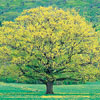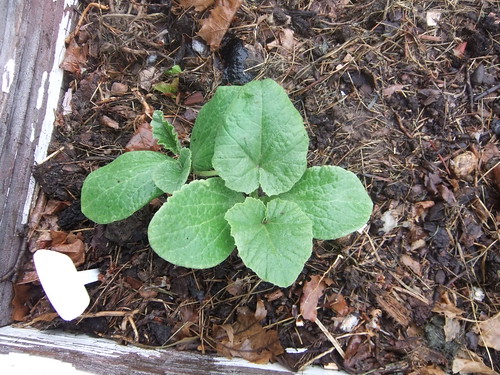|
|
Post by 12540dumont on Jan 23, 2012 15:29:09 GMT -5
Distilled to its essence, plant breeding is
human directed selection in genetically
variable populations of plants. Selection based
on the phenotype is the key feature of plant
breeding programs. The reliance on selection,
both artificial and natural, differentiates plant
breeding from other technologies. The target
population must be genetically variable,
otherwise no change can occur. If successful,
selection results in a population that is
phenotypically and genetically different from
the starting population.
“The key is man's power of accumulative
selection: nature gives successive
variations; man adds them up in certain
directions useful to him. In this sense he
may be said to make for himself useful
breeds.â€
Genetic recombination is
random, but the effect of selection is not. If
we select for resistance to rust we get rust
resistance. If we select for higher yields we
get increased yields. If we select for more
tender sweet corn we get tender corn. The
direct effect of selection is remarkably
predictable and precise.
The direct effects of selection are highly
predictable. However, what makes selection
immensely interesting and valuable are the
unpredictable correlated or indirect effects.
Such effects result in novel, useful, and
sometimes wonderful changes that could not
have been predicted prior to the beginning of
the selection program.
The above was taken from What would 21st Century Breeding Programs Look Like if They
Were Geared Toward a More Sustainable Agriculture-Objectives, Goals.
Frederick Kirschenmann
You can read more of this by goggling
New Seeds and Breeds for a New Revolution in Agriculture LOTS of good reading here.
The small quote from above knocked me out. I'm still thinking!
|
|
jim
grub
 
Posts: 75
|
Post by jim on Apr 30, 2012 21:05:22 GMT -5
Not all variable populations are the same. You can't select for tender sweet corn from a population if there is no variability for sweetness even though the colors of the kernels are myriad, size of the cobs and plant height from 1" to 10'.
Plant breeding does go beyond simply selection...The other "half" is generating useable diversity...knowing which parents will give you the variability to use. Then, knowing what you are looking for when you see it.
And, while this is thought provoking, This is "what 21st century breeding programs look like...most are working "toward a more sustainable agriculture."
At least in the public sector.
Jim
|
|
|
|
Post by Joseph Lofthouse on Apr 30, 2012 22:41:23 GMT -5
I don't like pedigree breeding. It doesn't work with my psychology. I simply can't predict ahead of time what useful traits are going to emerge from a breeding program, or what cultivars might contribute something valuable. No matter how glorious a plant looks in a seed catalog or seed bank database, it's impossible to predict ahead of time anything at all about how it will grow in my garden. It is impossible to predict ahead of time what traits are waiting to be discovered that have not been previously observed or selected. I just throw a bunch of random genes together and see what useful traits emerge for my farm. For me it's all about diversity AND selection.
|
|
|
|
Post by steev on May 1, 2012 0:31:15 GMT -5
Mutts rule! Thoroughbreds drool.
|
|
|
|
Post by raymondo on May 1, 2012 5:48:10 GMT -5
A good read, thanks Holly.
|
|
|
|
Post by templeton on May 1, 2012 7:22:07 GMT -5
For me parent selection is important (but I get your point, Joseph). Just thinking about my current embryonic projects, if I'm after a sweet snow pea of various colours, it makes sense to start with some parents that have sweet pods - at least I know the genes are in there somewhere - I could wait a long time for them to emerge from a pile of non sweet podded peas.
If I' trying to breed short fat coloured carrots, then having at least one parent that is short and fat makes sense.
|
|
|
|
Post by castanea on May 1, 2012 8:42:44 GMT -5
One of the interesting things they have found out about Euroepan wine grapes is that the ancestor of some of the best was an insignificant variety that no one would have ever intentionally used in a breeding program.
Sometimes (frequently) nature surprises you.
|
|
|
|
Post by steev on May 1, 2012 12:47:39 GMT -5
Potential is so often not obvious; not just a reason for open-goaled breeding, but also for broad-based affordable education.
|
|
jim
grub
 
Posts: 75
|
Post by jim on May 1, 2012 13:11:55 GMT -5
If you don't take that education you gain from working with plants as parents and apply it to the future, you are losing out on valuable information and reducing your ability to reach breeding goals in the future.
Random open pollinated populations are fine, but what you miss out is learning about the genetics of the plants involved.
"Hidden" traits are all part of the game, and why true breeders explore germplasm. I can tell you there are lots of instances when a poor yielding plant can contribute to improved yield in its progeny, or disease susceptible parents conferring some level of resistance.
Maybe keeping track of pedigrees is not your style, but how can you repeat previous success if you don't know what went on to achieve it?
Jim
|
|
|
|
Post by Joseph Lofthouse on May 1, 2012 14:18:38 GMT -5
how can you repeat previous success if you don't know what went on to achieve it? The mere fact that I have seed in my possession that was raised on my farm means that I have reached the most important goal of any breeding program: I have raised progeny, and it survived my pests, and my soil, and my climate, and my farming practices. That is the only education or records I need about my plants. Either they survived, or they didn't. I keep no pedigrees. The only records I keep is a note about phenotype that is scribbled on the outside of a seed packet. And that is thrown away immediately after the seed is planted. I'll grow something like 20,000 genotypes of sweet corn this summer. I would consider it a waste of effort to keep detailed written pedigrees on all of them. The DNA keep it's own records. The plant manifests it's phenotype during the growing season. |
|
|
|
Post by mnjrutherford on May 1, 2012 16:38:09 GMT -5
I think verbal history is more secure than "records". It's also more personal when it comes to teaching. There is a very small body of research that suggests that learning through written documents has diminished the capacity of human memory to an undetermined degree. Should we enter an age of turmoil, such records would lose priority and easily disappear. However, using the time required to generate the scribed records in TEACHING the data to the next generation stands a much better chance of surviving. We have become far to dependent on "false" values. Also, when I fail (which I do all to frequently, I would rather forget!  |
|
jim
grub
 
Posts: 75
|
Post by jim on May 1, 2012 18:03:47 GMT -5
Ive learned long ago...Memory is very imperfect...and since I can find articles from the 1800s and beyond, but have no way to talk to those people who wrote them...
Ill keep records!
A valuable resource is lost...DNA keeps its own records, but its still not easy to read!
Jim
|
|
|
|
Post by raymondo on May 1, 2012 18:32:23 GMT -5
Different strokes for different folks.
Joseph's style suits what he wants to achieve. It may not suit others and/or what they want to achieve. I use both approaches. I want to develop a melon that will ripen happily in my climate. I choose to go about that in a way that imitates Joseph's approach. I will plant as many different cultivars as I can lay my hands on, let them cross, and go from there. I will do the same for watermelon.
On the other hand, I would a like a red podded snow or snap pea and I'd like it to be deliciously sweet and have some tolerance to powdery mildew, the only significant disease of peas where I live. It makes sense to me to do some germplasm evaluation to find good parents for the crosses I might do. No need to go into details but you get my drift.
|
|
|
|
Post by keen101 (Biolumo / Andrew B.) on May 1, 2012 18:53:45 GMT -5
I'm using Josephs method for the watermelon project i have, because frankly any watermelons that survive are already way ahead of the ones that died immediately. I have no need for detailed records for the watermelons.
For the peas i've got so many varieties this year that i am going to keep them separate and keep detailed records. Will it always stay separate and detailed.. i have no idea.
For the squash this year i am actually planning on doing both. I'd like to keep pure seeds from all three varieties, but i would also like to do three (or six including reciprocal crosses) dedicated crosses between them, and i'm also considering letting some cross pollinate randomly between themselves as well. From the reports i've read, one variety i'm predicting to have superior flavor over the other two, but it's interesting to note that already in the seedling stage the other two are growing at 2x-3x the rate of the one predicted to have better flavor. If this holds true, it might be very worth while to cross the better tasting one with the two that will potentially grow better in my climate (or maybe just have more nutrients in their seeds).
|
|
|
|
Post by castanea on May 1, 2012 19:42:04 GMT -5
If you don't take that education you gain from working with plants as parents and apply it to the future, you are losing out on valuable information and reducing your ability to reach breeding goals in the future. Random open pollinated populations are fine, but what you miss out is learning about the genetics of the plants involved. "Hidden" traits are all part of the game, and why true breeders explore germplasm. I can tell you there are lots of instances when a poor yielding plant can contribute to improved yield in its progeny, or disease susceptible parents conferring some level of resistance. Maybe keeping track of pedigrees is not your style, but how can you repeat previous success if you don't know what went on to achieve it? Jim Some people are not interested in repeating previous successes. They are already on their way to new successes. Everyone has their own goals in plant breeding. |
|






